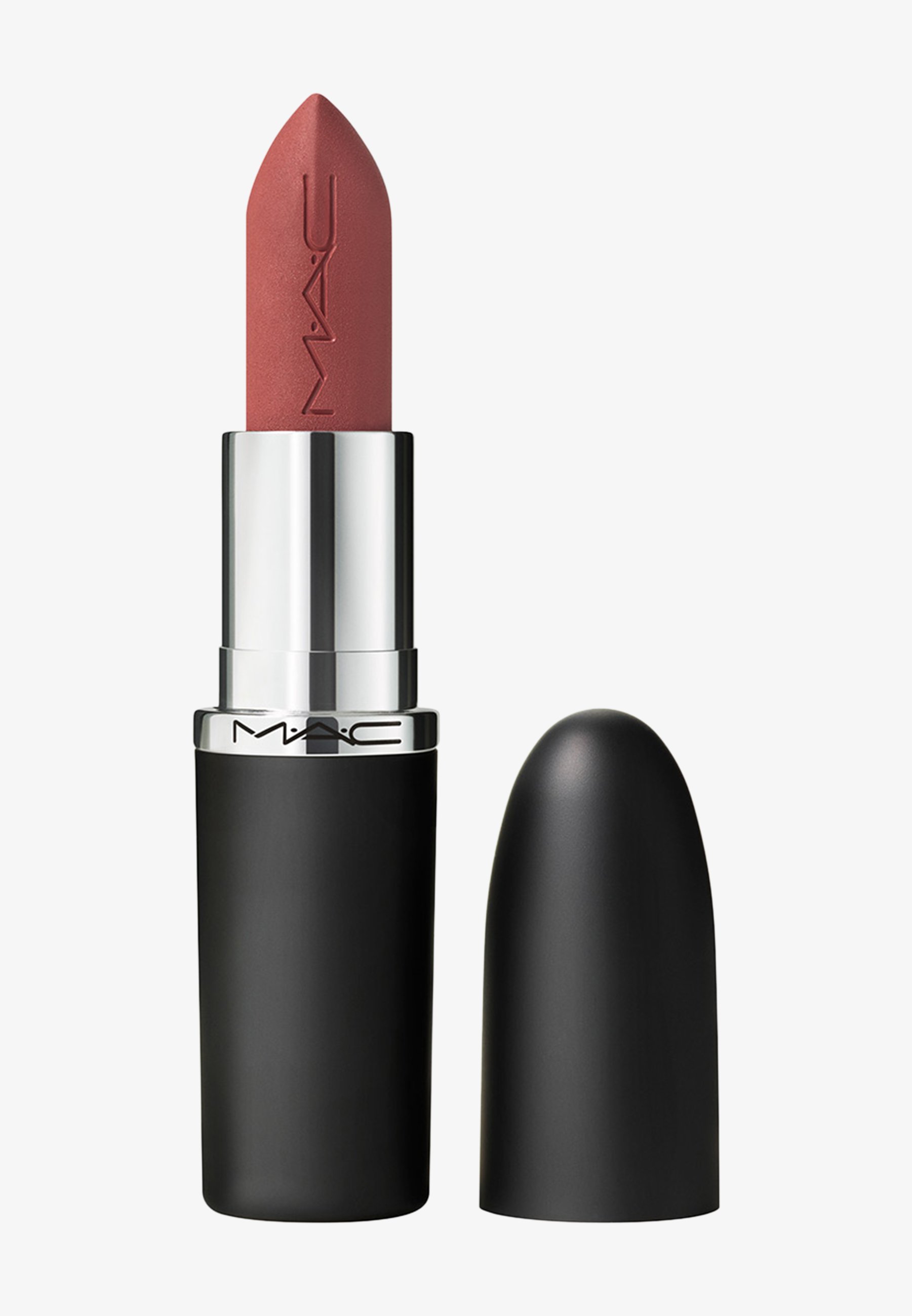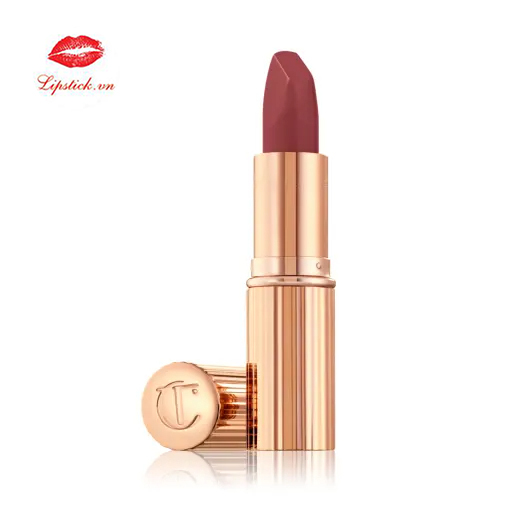our wedding day is a moment etched in memory, a tapestry of joy, love, and picture-perfect moments. And amidst the flurry of preparations, one detail stands out: your lipstick. It’s the finishing touch, the pop of color that completes your bridal look, ensuring you radiate confidence and beauty as you walk down the aisle. But with countless shades and formulas vying for your attention, how do you choose the perfect one? Fear not, blushing bride! We’ve done the legwork for you, curating a definitive list of the 10 Best Tried & Tested Lipsticks for Your Wedding Day.
VIEVE MODERN MATTE LIPSTICK IN PROMISE – CULT BEAUTY

A chic nude with a soft sheen, encased in luxe leather-effect packaging with gold detailing.
From her beloved beauty collection, Jamie Genevieve created Promise as the perfect shade for her own wedding day. This dusky rose nude offers a sophisticated alternative to traditional pink bridal lips. For a softer, more natural effect, try dabbing it on with your fingertips for a delicate, kissable tint.
One reviewer raved, “I’ve been searching for the perfect nude for years, and this is the best one yet! Gorgeous formula, long-lasting but never drying. Highly recommend!”
MAC MATTE LIPSTICK IN VELVET TEDDY – LOOK FANTASTIC

An iconic nude shade that’s stood the test of time—rumored to be a Meghan Markle favorite.
This deep beige-warm nude is universally flattering and beloved by makeup lovers everywhere. True to MAC’s signature formula, it applies smoothly and feels comfortable on the lips.
Our own wear test revealed an ultra-smooth application, though a touch-up was needed throughout the day. However, the stunning formula makes reapplying a pleasure rather than a chore.
One reviewer praised its hydrating feel: “MAC lipsticks are unmatched. As someone with dry skin, I love that this formula never dries out my lips. Velvet Teddy is the ultimate nude wedding lipstick for a wide range of skin tones.”
PAT MCGRATH LABS MATTETRANCE LIPSTICK IN CHRISTY – SELFRIDGES

A sophisticated pinky-nude encased in ultra-glam packaging with signature gold lips.
This is the lipstick that broke the internet after Adele wore it for her iconic 2021 Vogue cover. Makeup artist Pat McGrath applied it by pressing the color into Adele’s lips with her fingertip, creating a long-lasting, softly blurred effect.
Beyond its luxurious feel, the standout packaging ensures the lid stays secure in your bag—practical and stylish. A must-have for any bridal beauty collection.
HUDA BEAUTY POWER BULLET MATTE LIPSTICK IN WEDDING DAY – ASOS

Highly pigmented with a plush matte finish, made for a wedding-day-worthy pout.
Designed with weddings in mind, this rich, full-coverage lipstick glides on effortlessly. Its unique pointed tip allows for precise application and effortless lip contouring.
Add this to your ASOS cart and thank us later—it’s the ideal shade for brides looking for a picture-perfect matte finish.
MAX FACTOR COLOUR ELIXIR LIPSTICK IN TOASTED ALMOND – SUPERDRUG

A budget-friendly nude with a satin finish and nourishing ingredients.
For a your-lips-but-better effect, Toasted Almond enhances your natural lip color while keeping them soft and moisturized. The antioxidant-rich formula, infused with Vitamin E, ensures a smooth, hydrated finish—ideal for all-day wear.
Perfect for brides who want to let their eye makeup shine while keeping their lips effortlessly chic.
BOBBI BROWN CRUSHED CREAMY COLORS FOR LIPS & CHEEKS IN LATTE

A multitasking beauty essential for a radiant, peachy-brown glow.
Love a versatile product? This creamy, buildable formula works seamlessly on both lips and cheeks, blending in effortlessly for a soft, natural flush. Latte is a peachy-brown hue that looks stunning on deeper skin tones and brides seeking a slightly deeper nude.
A must-have for touch-ups on your big day—keeping your bridal bag light and efficient.
CHARLOTTE TILBURY K.I.S.S.I.N.G LIPSTICK IN BITCH PERFECT

A peachy-nude bridal favorite, recommended by wedding makeup pros.
Renowned makeup artist Amy Rose Macdonald swears by Bitch Perfect for her bridal clients. “It may not sound like a wedding shade, but it’s by far the most popular choice. It’s the perfect nude with a hint of peach and a subtle satin finish—it screams bridal!”
She also recommends Runway Royalty for a soft rosy nude and Dance Floor Princess for bridesmaids—a universally flattering pinky nude.
RARE BEAUTY LIP SOUFFLÉ MATTE LIP CREAM IN CONFIDENT

A weightless, air-whipped formula that nourishes and enhances.
Rare Beauty has taken the beauty world by storm, and Confident is the perfect rose-pink shade for a fresh, romantic bridal look. With a velvety texture that keeps lips plump and hydrated, it’s an ideal pick for long-lasting wedding day wear.
GLOSSIER ULTRALIP IN VILLA

A dreamy balm-lipstick hybrid for effortless, everyday elegance.
Glossier dubs these “the cashmere sweatpants of lipstick,” and we couldn’t agree more. Villa is a dusty rose shade that delivers a sheer, buildable wash of color with the hydrating comfort of a balm—perfect for low-maintenance brides who want a natural, just-bitten flush.
Bonus: You don’t even need a mirror to apply!
CHARLOTTE TILBURY MATTE REVOLUTION LIPSTICK IN PILLOW TALK

A cult-favorite nude-pink with a velvety, kiss-proof finish.
This is the lipstick makeup lovers swear by, and it’s wedding-day approved. The soft, matte formula enhances lips with a plush, just-been-kissed effect—so much so that it was even used on Bridgerton to create Phoebe Bridgerton’s signature romantic look.
One tester, despite not being a fan of mattes, was thoroughly impressed:
“I usually avoid matte lipsticks because they dry out so quickly, but this one stayed comfortable and soft. The color is subtle yet sophisticated, and it lasted for hours—perfect for a wedding!”







